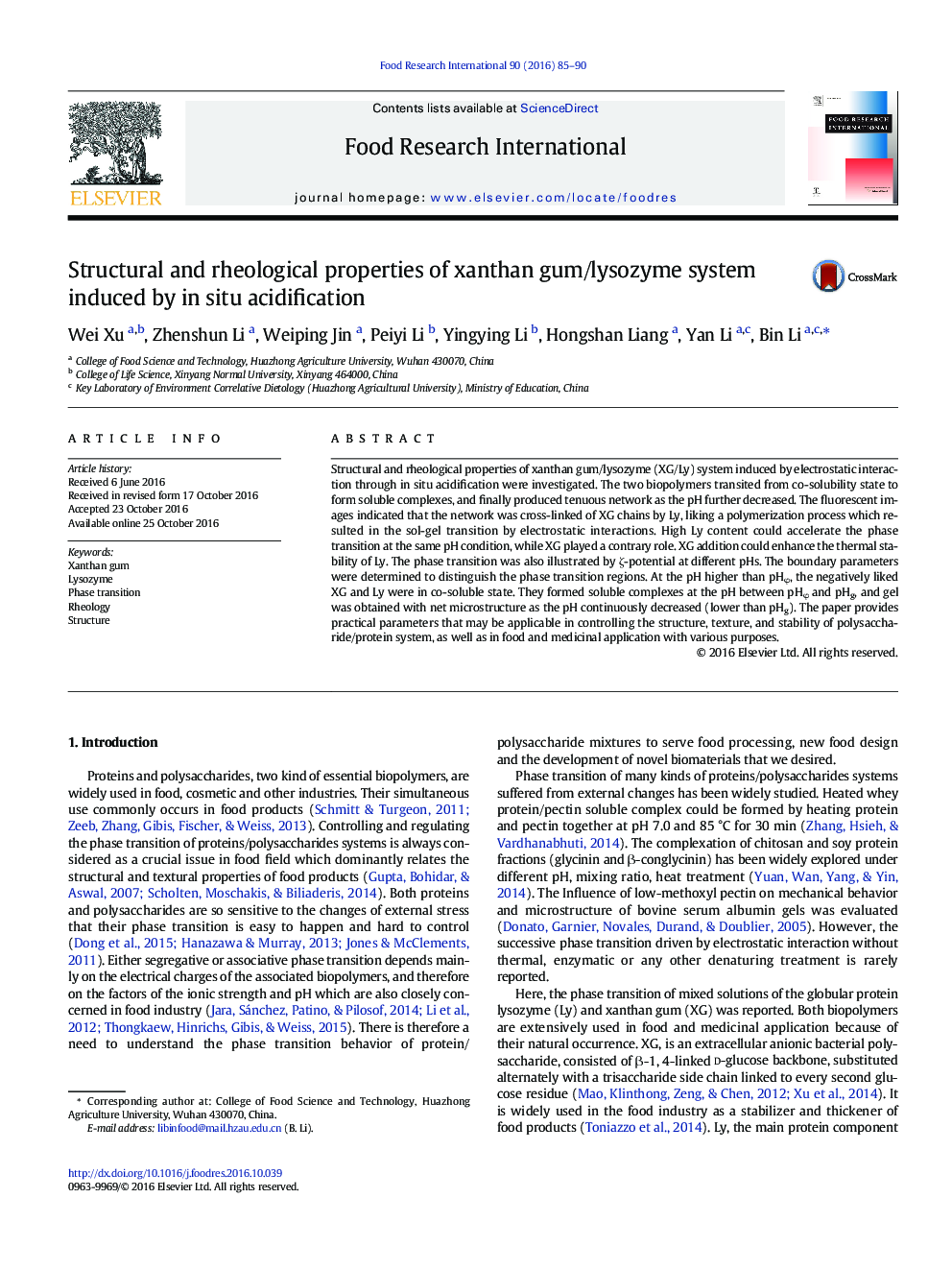| Article ID | Journal | Published Year | Pages | File Type |
|---|---|---|---|---|
| 4561018 | Food Research International | 2016 | 6 Pages |
•Phase transition was induced by electrostatic interaction by in situ acidification.•The successive phase transition of XG/Ly system was studied in a wide pH range.•Boundary parameters were determined to distinguish the phase transition.
Structural and rheological properties of xanthan gum/lysozyme (XG/Ly) system induced by electrostatic interaction through in situ acidification were investigated. The two biopolymers transited from co-solubility state to form soluble complexes, and finally produced tenuous network as the pH further decreased. The fluorescent images indicated that the network was cross-linked of XG chains by Ly, liking a polymerization process which resulted in the sol-gel transition by electrostatic interactions. High Ly content could accelerate the phase transition at the same pH condition, while XG played a contrary role. XG addition could enhance the thermal stability of Ly. The phase transition was also illustrated by ζ-potential at different pHs. The boundary parameters were determined to distinguish the phase transition regions. At the pH higher than pHφ, the negatively liked XG and Ly were in co-soluble state. They formed soluble complexes at the pH between pHφ and pHg, and gel was obtained with net microstructure as the pH continuously decreased (lower than pHg). The paper provides practical parameters that may be applicable in controlling the structure, texture, and stability of polysaccharide/protein system, as well as in food and medicinal application with various purposes.
Graphical abstractFigure optionsDownload full-size imageDownload as PowerPoint slide
